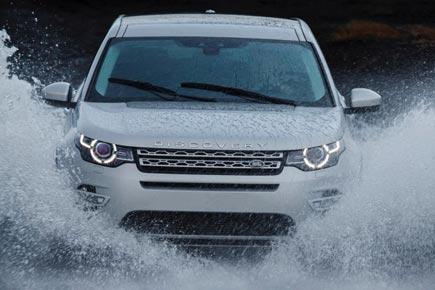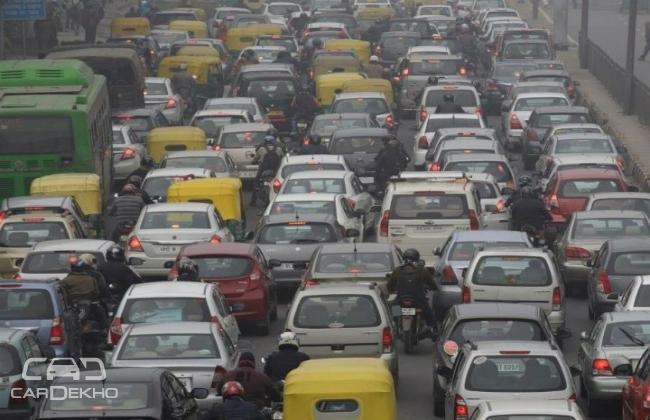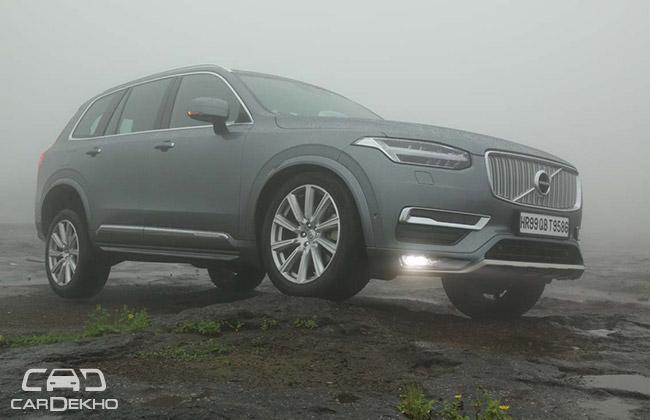Rains bring out the best in people. The smell of wet mud, piping hot bhajiyas and some kadak chai is all it takes to get the monsoon mood going. For our four-wheeled pals, though, the rains can be a bit of a bother...

Driving in the rain: The go-to guide
Rains bring out the best in people. The smell of wet mud, piping hot bhajiyas and some kadak chai is all it takes to get the monsoon mood going. For our four-wheeled pals, though, the rains can be a bit of a bother. There's not enough grip, not enough visibility, and the resultant traffic snarls can annoy the calmest of drivers.
Before we get on to some tips for you to follow while driving in the rain, make sure your car is in good shape. Most manufacturers conduct 'monsoon service camps' during the rainy season, and it is recommended to get the vehicle checked to prep it for the rains. The checkup will include a quick glance at the fluid levels, the tread on the tyres and, of course, the condition of your wiper blades. Once that's done, here's how you tackle the monsoons:
ADVERTISEMENT

1. Think: Do you really have to travel?
If it is pouring heavily and chances of waterlogging seem high, consider whether you can do without making the trip in the first place. If not, figure out if you can commute without using the car. If the weather gets out of hand, you'd get stuck, or worse, have a breakdown, which will cause more delays. Remember, being stuck alone is far better than being stuck with your car. In an extreme scenario, you might have to abandon your car – why get to that situation in the first place?
.jpg)
2. Do not enter flood water that's deeper than a foot
If you have set out with the car, try and avoid routes that are prone to waterlogging. If a route change is impossible, enter a flooded area only when you're sure that the water isn't deeper than one foot. The best way is to wait for another car to pass through the same stretch and gauge the depth of the water. If the water level is higher than the centre of the wheel, it is wise to look for alternative routes. Most cars have air-intakes that are mounted low, and which will suck in water and cause the engine to choke and stall. Matters will get worse if water seeps into the car's electricals.
.jpg)
3. Keep the car in first gear. Go slow
A waterlogged patch needs to be negotiated carefully. It is advisable to keep the vehicle in first gear and build the revs to around 3000rpm. In case you drive an automatic, slot the gear lever into 'L' or into 'Manual' and modulate the throttle. Do not enter a flooded road at high speeds. You risk aquaplaning and losing control of the car. Carry a steady pace of up to 15kmph, and maintain the speed right up to where the water recedes. Importantly, when you are crossing the flooded patch, do not accelerate or brake rapidly.

4. Ensure visibility
With a blanket of rain come envelopes of fog. Visibility is severely hampered in such cases. We highly recommend switching on your headlamps and fog lamps when driving through heavy rains. If your car is equipped with a rear fog lamp, be sure to turn that on as well. Turning on the emergency blinkers is a STRICT NO NO. You will not only cause a distraction but also puzzle drivers following you when you switch lanes.
.jpg)
5. Stalled? Do not attempt to crank continuously
In case your vehicle has stalled while driving through a waterlogged area, do not attempt to crank it over and over. Attempting to start the car while it is submerged can cause water intrusion, which can prove to be very expensive to fix. If the vehicle does not start up in a couple of cranks, it is best to slot into neutral and push the car to the left of the road. It is imperative you do this so as to avoid inconvenience to other motorists.
.jpg)
6. Dry the brakes
In wet conditions, it is natural for the brakes to lose their effectiveness. It is recommended you 'pump' the brake pedal after crossing a submerged area. Once you are at a complete standstill, press the brake pedal a few times to dry the brakes off. Remember to do this right before you set off, in case your parking got flooded overnight.
Bonus: Do NOT splash water
This is common courtesy, but we'll mention it anyway. Do not bother pulling to the side of the road just to splash water on innocent pedestrians. Slow down when you see a puddle –be considerate. This not only earns you good karma but also lets you avoid nasty potholes that are usually masked by a layer of water.
So there you have it. A handy guide to driving safe in the monsoon. So grab those keys and head out to a nearby hill station. Don't forget the windcheaters, gumboots and the roasted corn! Drive safe!
Also read on cardekho.com
 Subscribe today by clicking the link and stay updated with the latest news!" Click here!
Subscribe today by clicking the link and stay updated with the latest news!" Click here!







